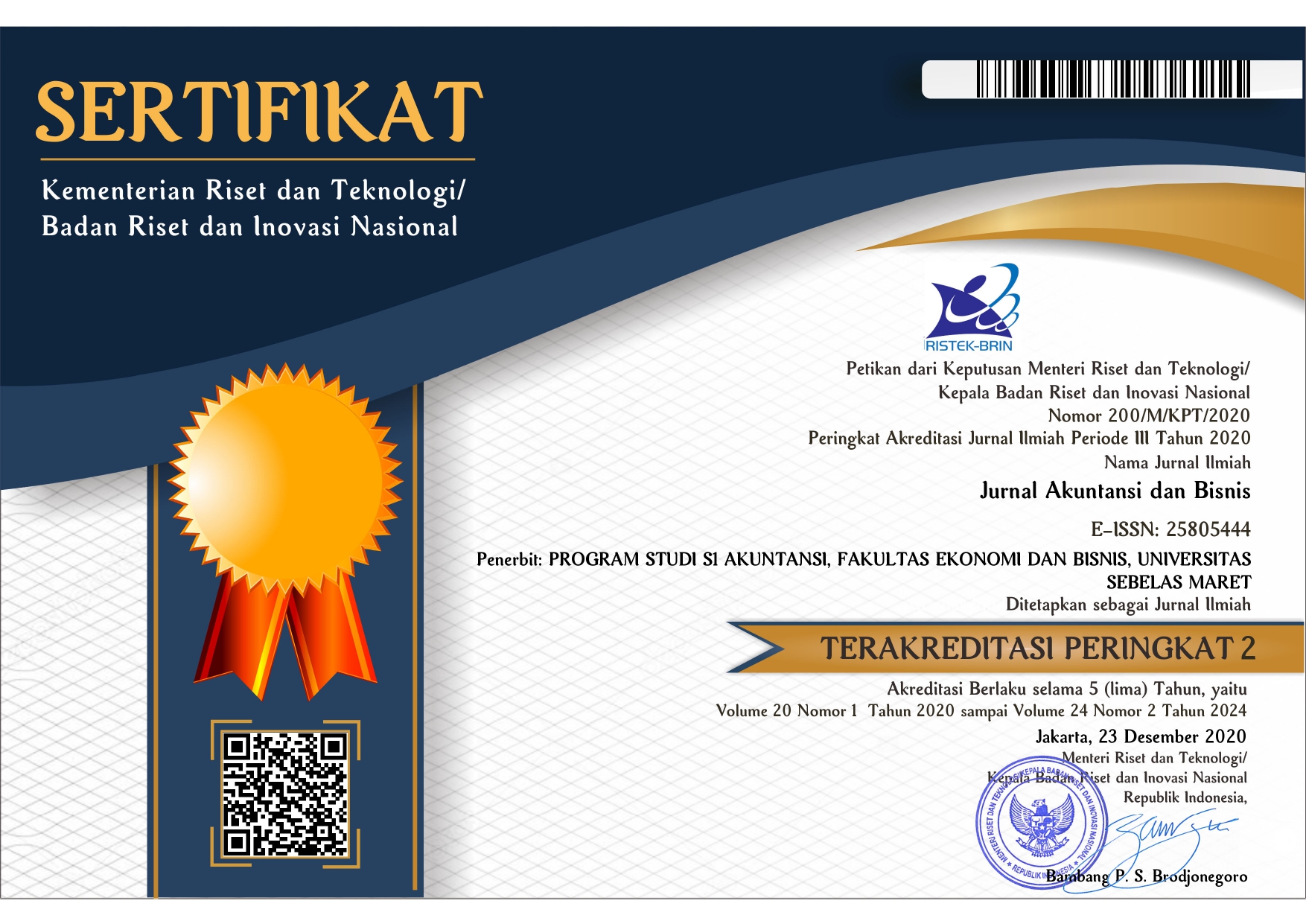Voluntary Demand for External Auditing, Internal Auditing, and Audit Committees by Family Business
Abstract
References
Abbot, Lawrence J & Susan Parker. 2000. Auditor Selection and Audit Committee Characteristics. Auditing A Journal of Practice & Theory 19(2): 47-66.
Abdel-khalik, A. R. 1993. Why Do Private Companies Demand an Audit? A Case for Organizational Loss of Control. Journal of Accounting, Auditing and Finance. (Winter) 8: 31-52.
Blackwell, D. W., T. R. Noland, and . B. Winters. 1998. The Value of Auditor Assurance: Evidence from Loan Pricing. Journal of Accounting Research 36(1): 57-70.
Carcello, Joseph V. dan Terry L. Neal. 2000. Audit Committee Composition and Auditor Reporting. The Accounting Review 75(4): 453-467.
Carey, P., Roger Simnett dan George Tanewski. 2000. Voluntary Demand for Internal and External Auditing by Familiy Businesses. Auditing A Journal of Practice & Theory 19: 37-51.
Chow, C. W. 1982. The Demand for External Auditing: Size, Debt and Ownership Influences. The Accounting Review. Edisi April: 272-291.
DeZoort, F. T. dan Steven E. Salterio. 2001. The Effects of Corporate Governance Experience and Financial Reporting and Audit Knowledge on Audit Committee Members‟ Judgments. Auditing A Journal of Practice & Theory 20(2): 31-47.
McMullen, Dorothy A. dan K. Raghunandan. 1996. Enhancing Audit Committee Effectiveness. Journal of Accountancy. Edisi Agustus, pp. 79-91.
Raghunandan, K., William J. Read. dan Dasaratha V. Rama. 2001. Audit Committee Composition, “Grey Director,” and Interaction with Internal Auditing. Accounting Horizon. Edisi Juni 15(2): 105-118.
Sharma, S. 2000. Applied Multivariate Techniques. John Willey & Son Inc.
Wolk, Harry I., Michael G. Tearney, dan James L. Dodd. 2001. Accounting Theory A Conceptual and Institutional Approach. Fifth Edition, South-Western Collegge Publishing, Thomson Learning, Ohio, USA.
DOI: http://dx.doi.org/10.20961/jab.v6i2.43
Jurnal Akuntansi dan Bisnis (JAB)
ISSN 1412-0852 (print), 2580-5444 (online)
Published by Accounting Study Program, Faculty of Economics and Business, Universitas Sebelas Maret, Indonesia

JAB on http://jab.fe.uns.ac.id/index.php/jab is licensed under a Creative Commons Attribution-ShareAlike 4.0 International License










